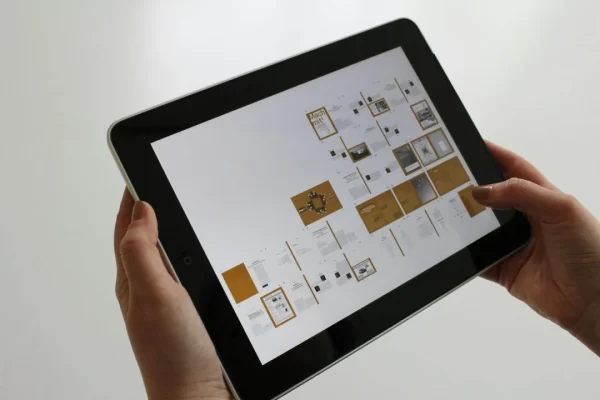In web design, many people focus solely on content, images, and typography, often overlooking one of the most powerful design elements: white space. Also known as negative space, white space is the empty area between elements on a webpage. When used effectively, it improves readability, enhances the user experience, and creates a visually appealing layout.
In this guide, we’ll explore the importance of white space, how it influences user experience, and practical techniques to use it effectively in web design.
What is White Space in Web Design?
White space is the unoccupied space between text, images, buttons, and other design elements on a webpage. Despite its name, white space does not have to be white—it can be any color or background.
There are two main types of white space:
Macro White Space
Macro white space refers to the large empty areas on a page, such as the space between sections, images, and main content blocks. It helps create a sense of balance, guides users through the content, and improves readability.
Micro White Space
Micro white space is the smaller gaps between elements like text lines, paragraphs, icons, and buttons. It enhances content legibility and makes navigation more intuitive by creating a visual hierarchy.
Why is White Space Important in Web Design?
Using white space strategically can significantly improve the overall user experience. Here are some key benefits:
1. Enhances Readability
Too much clutter can make content overwhelming. White space improves readability by separating text into digestible chunks, making it easier for users to absorb information.
2. Improves User Navigation
White space helps guide users’ eyes smoothly across the page. By creating clear divisions between sections, visitors can quickly find the information they need.
3. Increases User Engagement
A cluttered website can frustrate visitors, causing them to leave quickly. A well-spaced design encourages users to stay longer and interact with your content.
4. Highlights Key Elements
Want to draw attention to a CTA button, headline, or important message? Surrounding key elements with white space makes them stand out and increases conversion rates.
5. Creates a Professional and Modern Look
Minimalist, clean web designs are visually appealing and create a sense of sophistication. White space contributes to an elegant and modern aesthetic that enhances brand credibility.
How to Use White Space Effectively in Web Design
1. Maintain Consistency
Ensure a uniform amount of white space throughout your design. Consistency in spacing and padding creates a structured and professional appearance.
2. Utilize a Grid Layout
Using a grid system, such as Bootstrap or CSS Grid, helps maintain balance and alignment. This makes your website more organized and visually appealing.
3. Prioritize Content Hierarchy
Arrange content in a way that naturally guides the user’s eye from most important to least important. White space can help differentiate headers, subheadings, and body text.
4. Optimize Line Spacing and Paragraphs
Increasing line spacing and adding sufficient space between paragraphs improves readability and prevents content from appearing too dense.
5. Create Visual Emphasis
Surrounding important elements with extra white space draws user attention. Use this technique to highlight CTAs, headlines, and key messages.
6. Avoid Overcrowding
Avoid stuffing too much information in a small space. Give each design element breathing room to ensure a smooth user experience.
Common Mistakes to Avoid When Using White Space
While white space is a powerful tool, misusing it can harm your design. Here are some common mistakes to avoid:
1. Using Too Little White Space
Overcrowded pages can be visually overwhelming and difficult to navigate. Give content and elements enough space to breathe.
2. Inconsistent Spacing
Irregular white space usage can make your design appear unbalanced. Keep spacing uniform across sections and pages.
3. Not Adapting for Content Type
Different content types require different spacing. Text-heavy pages may need more micro white space, while image-heavy layouts benefit from increased macro white space.
4. Overusing White Space
While white space is beneficial, too much can make a website feel empty and incomplete. Balance is key.
FAQs
1. Does white space only refer to empty white backgrounds?
No. White space can be any color, pattern, or even a background image. It simply refers to the space between design elements.
2. How much white space should I use on my website?
There is no one-size-fits-all approach. The right amount of white space depends on your website’s design goals, content type, and user preferences.
3. Can too much white space make a website look empty?
Yes. While white space enhances design, excessive use can make a site feel unfinished. It’s important to strike a balance between content and space.
4. How does white space impact SEO?
White space improves readability and user experience, which can reduce bounce rates and increase time spent on the page—factors that contribute to better SEO rankings.
5. Does white space slow down website performance?
No. White space is simply empty space and does not add to loading times. In fact, a well-spaced design can enhance usability and improve performance.
Start Using White Space in Your Web Design Today!
White space is a valuable tool in web design that can greatly impact your website’s user experience. By creating space between design elements, using white space to draw attention to important elements, and thinking about the content on the page when designing your website, you can create a website with a great user experience. So don’t be afraid to experiment with white space in your designs and see how it can take your website to the next level.
If you’re looking for a reliable and experienced digital web design agency to help your business grow, look no further than Digital Rescue. Contact us today to learn more about our services and how we can help you reach your goals. Let us be your digital rescue!



